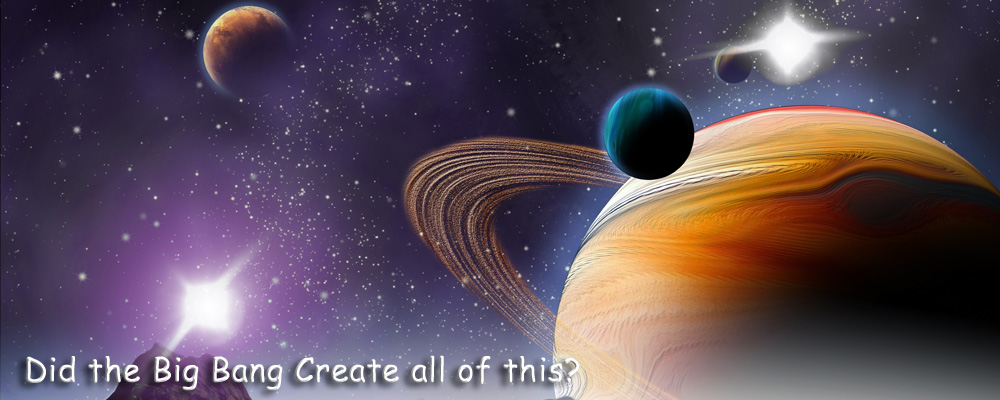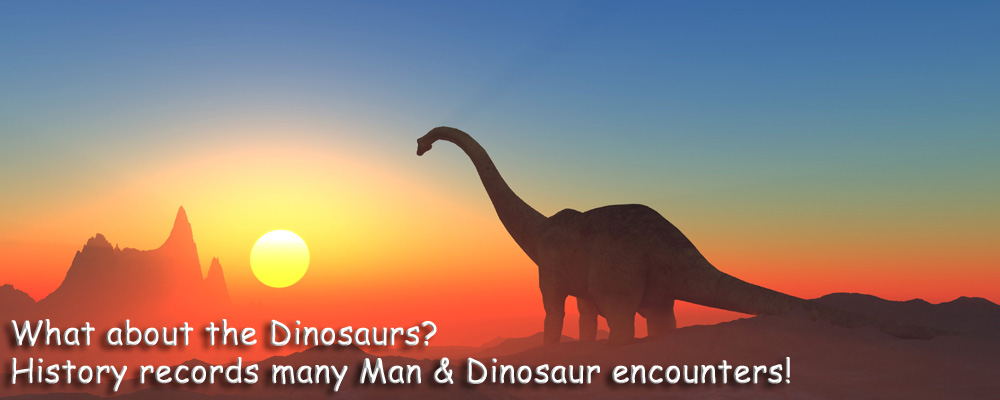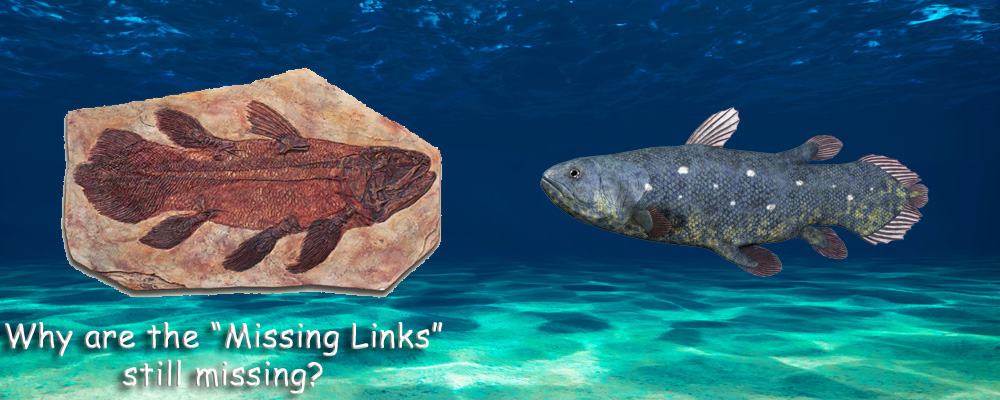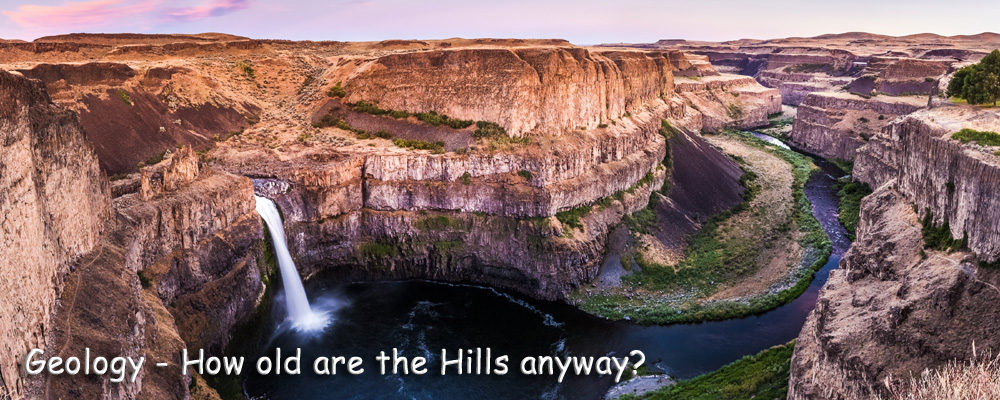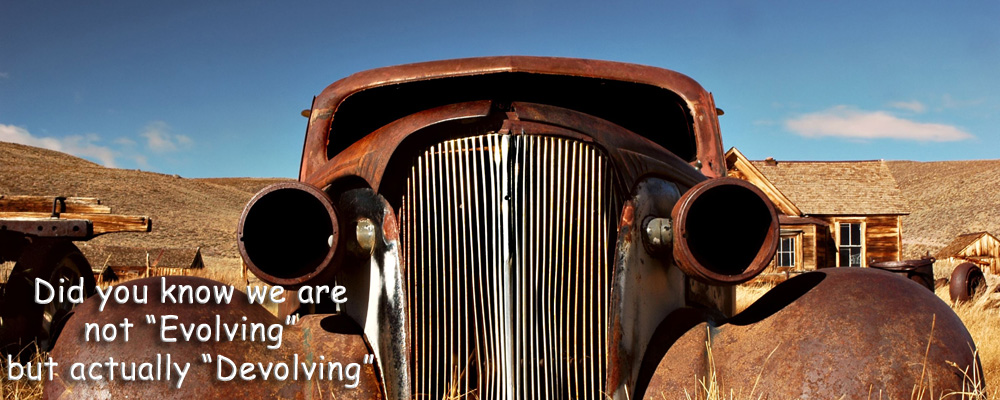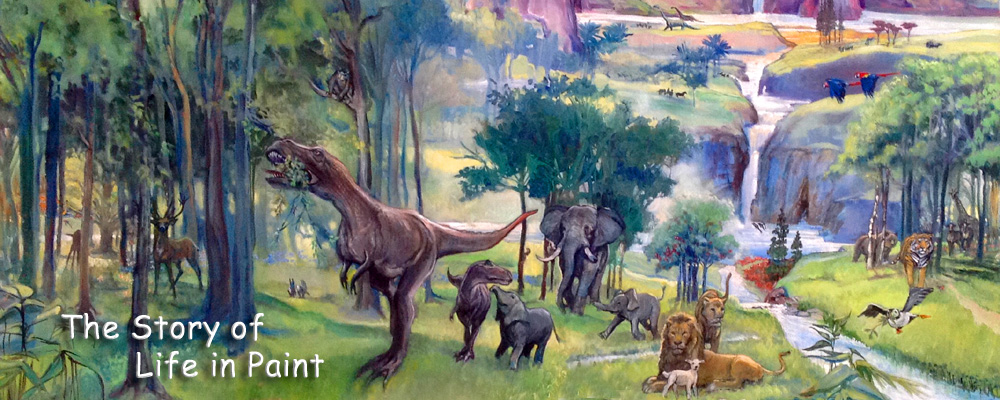



It is important I believe to show that Creationism as a movement does not just consist of allegedly right wing, radical, fundamentalist evangelical Christians, which is the extremist charge sometimes levelled at Creationists. Catholicism, which tends nowadays to be more considered in its pronouncements, is assumed to have accepted Evolution as a fact and incorporated it into its theology through some form of theistic evolution (God uses evolution). Recent popes have given evolutionary theory the green light which for most Catholics will have settled the matter. But this does not apply everywhere, and there are well qualified scientists professing the Catholic Faith who would not agree with for instance, Francis Collins, the well known Roman Catholic scientist, who headed the Human Genome Project who is a theistic evolutionist.
Quoted below are articles written by Roman Catholic Creationists: a rare but not extinct species.
In my view the two articles quoted in full below on Sedimentology by Guy Berthault are the most damaging to evolutionary theory. They give an alternative flood model explanation to the geology of the earth that does not require millions of years of gradual erosion and sedimentation. To my knowledge Berthault is the only scientist who has troubled himself to perform actual laboratory experiments on the subject of what happens to mixed sediments in flowing water. As most of the geology of the earth is composed of water borne sedimentary rock you might have considered such experiments a vital function for geologists. And yet Berthault was surprised to find that no such experiments had been done. You can see for yourself some video footage of his arguments and the experiments he conducted at Colorado State University. This can be found at the bottom of the page following Berthault’s final article. These experiments are amazing when set against the accepted geological model. Berthault’s research demonstrates that multiple layers of strata can be laid down by water flow both vertically and horizontally at the same time.
............................................
Below is the full transcript of the talk given by these five Roman Catholic Scientists.
“The Scientific Impossibility of Evolution”
November 9, 2009 Libera Università degli Studi San Pio V Via Cristoforo Colombo, No. 200 Rome
Contents
1 “The Scientific Impossibility of Evolution”
2 Experiments in Stratification Do Not Support the Theory of Evolution
3 The Second Law of Thermodynamics Excludes Evolution
4 Are Radio-
5 Did Megafauna and Dinosaurs Live at the Same Time?
6 Impact of Race Formation and Mutations on the Theory of Evolution
Experiments in Stratification Do Not Support the Theory of Evolution / Guy Berthault, Meulan, France
The theory of evolution formulated by Darwin claims the fossil record shows that organisms have transformed into different species over the long periods of time expressed in the geological time-
Science being founded upon facts, I first examined the reports of deep-
In 1991, I supervised experiments to obtain larger strata under the direction of Pierre Julien, Professor of hydrology and sedimentology at the University of Colorado (USA). These demonstrated that a turbulent current creates strata prograding together laterally and vertically as a result of variations in current velocity. A report was published in 1993 by the Geological Society of France. The experiments showed that neither the lamination nor the stratification produced could be explained by the principle of superposition. The experimental data revealed by this research has yet to be incorporated into present-
Nicolas Stenon and his successors having overlooked the current as an agent of sedimentation, it was necessary to conduct experiments in the laboratory and paleohydraulic analyses on the terrain of existing stratified sedimentary rocks to demonstrate the omission. The latter analyses were performed to relate sedimentary particles according to their size with current velocity at the successive stages of erosion, transport and deposition. The relationship applies to the lithology of sequences from conglomerates to small particles. Their application was developed in my 2002 publication Analysis of the Main Principles of Stratigraphy on the Basis of Experimental Data in the journal of the Russian Academy of Sciences.
A team of Russian sedimentologists directed by Alexander Lalomov (Russian Academy of Sciences’ Institute of Ore Deposits) applied paleohydraulic analyses to geological formations in Russia (examples are the Crimean Peninsular and the North-
Mr. Guy Berthault is a graduate of the Ecole Polytechnique, France, a member of the French Geological Society and the Association of Sedimentologists. His experiments have been published by the French Academy of Sciences, the Journal of the Geological Society of France, and the Russian Academy of Sciences journal “Lithology and Mineral Resources.”
The Second Law of Thermodynamics Excludes Evolution / Dr. Thomas Seiler, Ph.D., University of Munich
Physicists recognize that the whole natural world operates according to the “Second Law of Thermodynamics,” which states that for isolated systems entropy, which is a measure of probability, will always increase. Entropy determines the direction in which all processes in nature proceed: from less probable distributions to more probable distributions, from ordered structures to disordered ones and never vice versa.
An example of the operation of entropy is genetic degeneration of a biological species due to negative mutations: for instance, on some windy islands, certain flies have entirely lost their wings. This is explained by the advantage of staying on the ground in an environment where strong winds can carry flying insects far out to sea. A succession of micro-
An objection to the above premise is that the constraints of thermodynamics are not valid for biological structures because they exist in open systems. “Open” means that matter and especially energy can be exchanged with the surroundings. In order to test the validity of this objection, we must examine in detail what is possible in open systems.
The limits of an open system can be illustrated by the example of machines that reduce entropy such as refrigerators. They transfer heat from a cold volume (the inside space) to a warm volume (the surrounding room). This highly improbable phenomenon, however, can only be achieved because a complex mechanism that can automatically perform the cooling cycles exists already. Such entropy reducing machines are also found in the chloroplasts of plants. A further example of order increasing in open systems is observable in the formation of crystals, e.g. snow-
The reason why the proposed evolution of biological organs does not belong to such kinds of processes is that these processes are the physical ways in which a pre-
On the other hand, the bodies of living creatures represent new information. It is not pre-
Are Radio-
Methods using radioactive decay effects are supposed to confirm stratigraphic chronologies and to improve our knowledge of the age of the Earth. In fact, the reality is much more complicated. Fundamental issues must be discussed. For example, what is the importance of the assumptions made for initial conditions in the final result? Is the experimental method applicable to events in the past? And, if the answer is yes, with what precautions?
Reviewing the history of radiodating methods shows the oversimplified assumptions made at the beginning of the XXth century. The extreme simplicity of nuclear models, the lack of knowledge of radioactive decay series, the ignorance of isotopes, the “closed system” hypothesis, but above all, the choice of initial conditions far from realistic, gave rise to contradictory results. We will show that, despite huge improvements in measurement techniques, these weaknesses from the beginning were never corrected. Results discordant with the geological time-
Based on the radioactive decay series initiated by uranium 238, we analyze the consequences of different initial conditions on the age of metamorphic rocks.
Through some examples, we discuss the validity of the “closed system” concept (no exchange between the rock crystals and the environment), in particular for the potassium/argon method applied to volcanic rocks undergoing hydrothermal conditions, far from standard conditions (supercritical state at deep depths) and never included in models of crystallization. The crystallization occurring in liquid or viscous magma traps gases and crystal outgassing during eruption is not total. Argon 40 in excess is demonstrated in magmatic rocks from recent volcanic eruptions, like Mt St Helens (USA) and Mt Ngauruhoe (New Zealand). The quantity of argon 40 trapped depends on hydrothermal conditions during solidification and on structure of the crystal lattice. These results explain the systematic and erratic ages obtained from material collected at recent eruption sites.
The need of a free, open and wide debate on such subjects, linked with systematic experiments, is vital for the credibility of modern scientists involved in this research field.
Dr. Jean de Pontcharra is the Research Group Head, CEA-
Did Megafauna and Dinosaurs Live at the Same Time? / Josef Holzschuh, Sydney, Australia
The discovery of collagen and soft tissue in a Tyrannosaurus-
A study of radiocarbon literature for dating of both megafauna such as mammoths, mastodons, saber tooth tiger (Smilidon), giant bison and sloths; and, dinosaurs like Acrocanthosaurus, Allosaurus and Hadrosaur show that they all lived at the same time. According to Dr. Walter Libby, the inventor of the radiocarbon dating method, “There is no known natural mechanism by which collagen may be altered to yield a false age.” Other scientists have shown that collagen and soft tissue would degrade within 30,000 to 100,000 years. And even significant trace amounts of C-
To address these apparent and very serious chronological anomalies, account needs be taken of the evolving situation in geology and paleontology. Experiments in stratification challenging the principles of stratigraphy and hence the geological time-
Dr. Josef Holzschuh has a Ph.D. in geophysics from the University of Western Australia.
Impact of Race Formation and Mutations on the Theory of Evolution / Maciej Giertych, Kornik, Poland
Throughout Europe evolution is taught in schools as a biological fact. The main evidence for this presented in school textbooks is based on the assertion that formation of races is an example of a small step in evolution. This is profoundly wrong. Races form as a consequence of genetic drift, selection and isolation. Genetic drift results from the accidental loss of some genetic variation in small populations due to inbreeding. Selection depends on the elimination from a population of all forms not adapted to the particular environment. With this elimination also some gene variants (alleles) get lost. For natural races to be identifiable they have to remain isolated from the main body of the population. The same is true in breeding, where the breeder reproduces the race formation procedure only applying selection pressures of his own choice. Macroevolution requires increase of genetic variants, thus race formation which depends on their reduction is a process in the opposite direction, comparable to extinctions.
Positive mutations, as a mechanism leading to new functions or organs, are an undemonstrated postulate. We can demonstrate many neutral and negative mutations, but no positive ones. The claim that the appearance of resistance to man-
Dr. Maciej Giertych holds an M.A. in forestry from Oxford University in England and a Ph. D. in tree physiology from Toronto University, Canada, and a D.Sc. in genetics from the Agricultural Academy in Poznan, Poland. A population geneticist, Dr. Giertych has published more than 200 scientific papers and several books, primarily in the field of population genetics of forest trees.
Sedimentology / A new approach : paleohydraulic analysis by Guy Berthault
Analysis of the Main Principles of Stratigraphy on the Basis of Experimental Data
The initial phase of the experimental program revealed the relative paucity of data available on the subject. Of course, sediments had been examined and flume experiments performed in connection with building dams and other projects, but none with the object of explaining the mechanics of stratification. The data banks provided little. It soon became evident that the basic principles of superposition, continuity and initial horizontality laid down in the seventeenth century had been accepted, albeit with development, virtually without question. There seemed to have been little attempt to examine the actual mechanics involved. Yet a few simple experiments, first with laminae and later with strata showed that the time needed for micro or macro strata form was of quite a different order to that generally accepted. The implications were far-
« Ce qui mesure le temps, ce sont les durées de sédimentation, sur lesquelles tout le monde est plus ou moins d’accord, et non celles des orogenèses et des « révolutions » biologiques. »
(Translation: Time is measured by the time taken for sediments to deposit, a fact upon which everybody is more or less agreed, and not by orogenesis or “biological “revolutions”)
Prof. Gohau mentioned in his work how Charles Lyell was influenced in the construction of the geological time scale by his belief in biological « revolutions» occurring over 240 millions of years.
In the 20th century this figure was replaced by radiometric “absolute” dating of 525 million years. Such a figure is based upon the belief that igneous rocks can be dated radiometrically. Criticisms of radiometric dating have been growing over recent years and following the chronology shown by our experiments I have looked at the basic premises upon which such dating is based. There indeed seem to be good physical reasons to challenge it.
In his book “Radioelements” (Masson 1966) Daniel Blanc wrote:
“no variation of the radioactive constant has been observed whatever the experimental conditions, showing that it is independent of the conditions in which the radio-
This is particularly the case for temperature and pressure which determine the change of state of magma to crystalline rock. Radioactivity would not, therefore, appear to be affected by the change of state; consequently it could not be used to date an igneous rock at the moment of its crystallisation.
Moreover, the elements present in the rock at the time of crystallisation came from the magma in which gravitation determined their position: they need not necessarily, therefore, be parent and daughter from the same radioactive element.
The problem of exaggerated time scales resulted from the work of Nicolas Stenon, originator of geological principles in the seventeenth century. Stenon did not take into account the effect of a turbulent water current on the formation of strata. His principles were based upon his observations but since no hydraulic laboratories existed at the time his principles were not tested experimentally. (This observation is critical, because on it was built the belief that sedimentary layers / strata were each built up very slowly and gradually. The first and lowest layer would become established before a second, third, fourth or fifth could be laid successively, each one on top of the previous layers or strata. That is how hundreds of millions of years became accepted as the one and only explanation for the geological record. Nicholas Stenon, or Stenno as he is otherwise known has been proved wrong through empirical science: actual flume experiments. Hutton and Lyell were no different to Stenon, they had no guide other than their intuition, philosophical outlook and belief systems. Hutton's 1788 paper is a perfect example. It concludes: "The result, therefore, of our present enquiry is, that we find no vestige of a beginning, no prospect of an end." Hence long ages, millions of years and the apparently rock solid establishment of the very life blood and oxygenation of evolutionary theory.)
Our experiments on the formation of strata are fundamental because they demonstrate, ‘inter alia’, that in a continuous turbulent current many superposed strata.) form simultaneously and progress together in the direction of the current; they do not form successively as believed originally. These experiments explain a mechanism of strata building, showing empirically the rapid formation of strata.
( Superposed is the principle that in a group of stratified sedimentary rocks the lowest were the earliest to be deposited. The experiments referred to above prove that a series of layers can be laid down simultaneously, therefore not Superposed.)
The important advances in sequence stratigraphy that have been taking place during the period of our research harmonise with our experiments. For instance, systems tracts composed of several strata are considered isochronous by sequential stratigraphy; a fact that we have demonstrated in the laboratory.
My note: (A sequence of events is isochronous if the events occur regularly, or at equal time intervals.)
The paleovelocity of current below which particles of given size are deposited and the corresponding capacity of sedimentary transport of the current can be determined experimentally. These two criteria ascertain the time required for sequence deposition. Consequently, recent paleohydraulic analyses undertaken by our colleagues in Russia confirm the shorter time for sequences to deposit than the geological time attributed to it.
As reported in the latest publication (G.Berthault, A.Lalomov, M.Tugarova., Lithological and Mineral Resources. Vol.1, 2011) the time of sedimentation of the St. Petersburg sequence represents only 0.05% of the time refered to by the geologic time scale.
Importantly, Marchal (1996) has demonstrated that mountain orogenesis (mountain building) provoked a shift of the axis of rotation of the Earth triggering large marine series. It is significant that, in the geological column since the Cambrian period, eighteen marine series, or systems, are inter-
As reported in the Bulletin of the Museum of Natural History of Paris (1996-
My notes: (Orogenesis, the process of mountain building, occurs when two tectonic plates collide – either forcing material upwards to form mountain belts such as the Alps ...)
The direction of transgressions and regressions following each orogenesis corresponds to the succession of resulting sequential facies, such as sandstone, shale and limestone as seen from the surface of the deposit. An example was given in Berthault (2004) The Tonto group is assigned to Cambrian. It proceeded from the Cadomian orogenesis, at the beginning of the Cambrian; and resulted from a transgression going from the Pacific Ocean in the west to New Mexico in the east. Other directions can be determined from other orogenesis which occurred elsewhere around the Earth.
Contemporaneous marine fauna vary according to depth, latitude, and longitude and such ecological diversification exists in the geological column. The apparent change of fossilized marine organisms from one series to another following an orogenesis can result from different fauna, transported by water flows from different locations resulting from successive orogeneses. What has been attributed to biological change could be ecological in nature explained by fauna coming from different orogeneses, taking into account the short time of sedimentation.
In conclusion, a relationship can be established between cause and effect. Orogenesis, which can result from periodic mantle plumes (Rampino & Prokoph, 2013, causes shifting of the polar axes, which then leads to consecutive marine series and sedimentary deposits. The duration of the latter is much shorter than given by the stratigraphic time scale and so calls for a serious revision of the foundation of historical geology (Berthault, 2012).
We believe the foregoing shows the need for a fundamental revision of geological chronology integrating the new data and based upon observation checked by experiment.
Guy Berthault.
The presenter of this four part video has taken his script from the writings of Guy Berthault. He has, at least to me, a slightly irritating high blown delivery that makes the content seem heavy going. He is upper class, elderly and very English. Very much like myself apart from the upper class. However the content is excellent, easy to follow, and features in large part the work and experiments of Guy Berthault and colleagues. This is Geology stripped of its requirement of billions or millions of years, and proved to be a reasonable hypothesis by tested and repeatable processes. In other words good old empirical science.

Physical Evidence versus Evolutionary Speculation
You may have noticed that all the actual physical evidence is stacked on one side of the argument and all the speculation and hypotheses on the other. Evolutionists can parrot all their objections, such as their convictions regarding millions years and their long age dating methods, but no deductions drawn from these methods can be proved or calculated with any degree of certainty. And the reason is simple: no-
| The Gospel through Art |
| Built on Rock Websites |
| Christian Flash Mobs |
| The Ark |
| Genesis 3D Movie |
| Dinosaurs for Dummies |
| Richard Dawkins - What if? |
| More to Life |
| About Built on Rock |
| Useful Links |
| Book a Talk |

